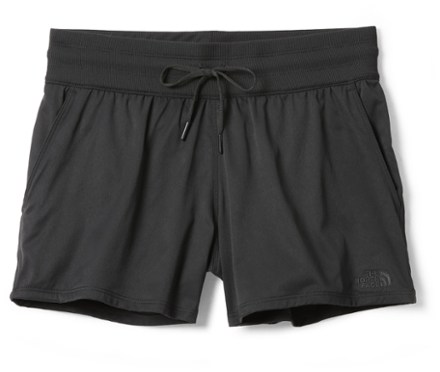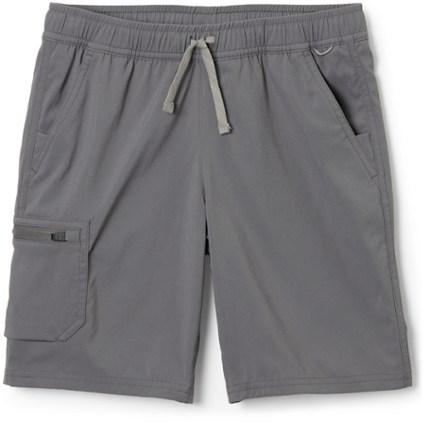Factors ranging from climate change to years of fire suppression have contributed to a rise in wildfires. (To learn more about the complex reasons behind this increase, and to hear a gripping account of one particularly devastating fire—the 2017 Eagle Creek fire in Oregon—check out the podcast Wildfire.) The bottom line for people recreating outdoors today is that we are experiencing more fires, more intense fires and much longer fire seasons. It's clear that preparing for the possibility of a wildfire when we venture outdoors is becoming ever more important and necessary.
Here are some things you can do when planning an outdoor vacation in an area that has potential to be impacted by wildfire or wildfire smoke:
- Have a backup plan for your trip: Don't head into danger just because you don't want to change your plans.
- Check resources in advance: Take advantage of available resources that can give you helpful information months in advance of your trip and immediately before you travel.
- Pack gear with the possibility of wildfire in mind: Personal locator beacons, face masks and weather alert radios are all valid considerations.
- Know what to do if you encounter wildfire smoke: Different colors and behaviors of the smoke can give you clues about what actions you might take.
- Know what to do if you encounter wildfire flames: Depending on your location relative to an active fire, you would take different actions.
- Take precautions to keep your campfire from becoming a wildfire: Make sure you know the proper techniques for starting and putting out a campfire in the wilderness (and have one only when fires are allowed).
Read on for helpful details.
Have a Plan B
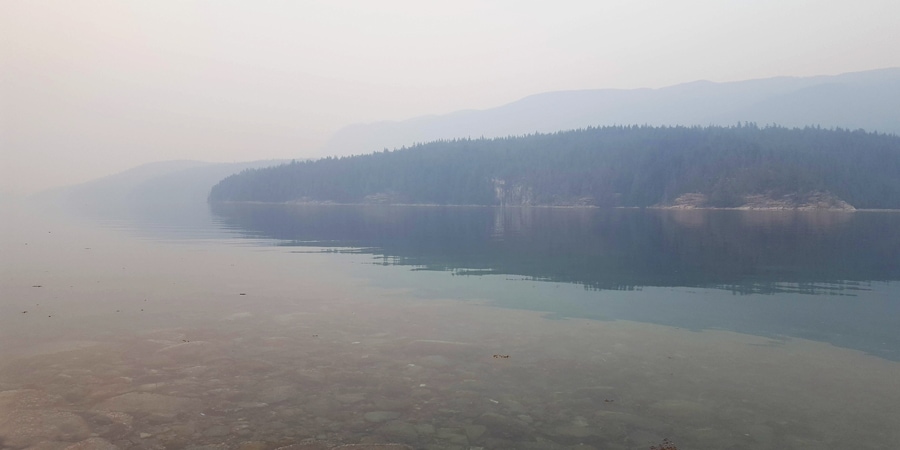
If you've scheduled vacation time, paid for transportation and snagged a hard-to-get permit for an iconic outdoor place, the idea of going elsewhere might seem unthinkable. But closures, even of national parks, do occur. And persevering through smoke-filled skies leads to miseries, not cherished memories. Plus, it's not wise to dismiss smoke as simply a temporary irritant. Smoke is a complex brew of gases (some are toxic when a fire is close) and microscopic particles that scatter far and wide, and can penetrate deep into your lungs. Associated health problems range from temporary discomforts like burning eyes, runny nose and wheezing to more serious long-term damage to your pulmonary system.
So, when arranging your outdoor adventures months in advance:
- Have a flexible mindset about your plans from the very beginning.
- Investigate in advance whether you can postpone your original planned trip for another time if necessary.
- Plan a backup trip in an alternate location so you can pivot quickly if needed.
- Embrace a "staycation" rather than heading into an unhealthy or stressful situation (which likely won't be as enjoyable as you planned anyway).
Mitigate Risk When Planning A Trip
With unpredictable human beings being a major cause of wildfires (we start more than 85 percent of them), and with lightning strikes also igniting fires in remote areas, you can't know in advance exactly where a wildfire will occur. But there are strategies and tools you can use to your advantage when planning your outdoor recreation:
- Check the Current Fire-Season Outlook Report (up to 4 months ahead). Consider destinations (or backup trip options) that are in a green (low-risk) area.
- Make sure you have options: Put together a trip where there are multiple trails and roads into and out of the area.
- Ask local land managers for maps and info about wildfires in recent years. Burn zones might have road and trail closures because they are prone to landslides and have unstable trees and branches. On the flipside, burned areas have little fuel now.
Make sure you have options: Put together a trip where there are multiple trails and roads into and out of the area.
Resources to Check Before You Travel
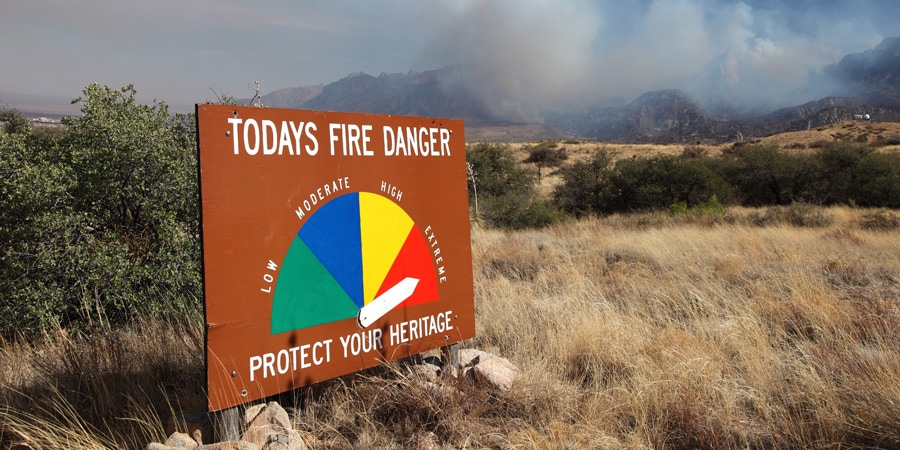
- Check the weather forecast from the National Weather Service or your favorite phone app to assess heat levels and the risk of thunderstorms, both of which increase fire risk.
- Check InciWeb for info on all currently burning major fires, including a containment percentage (how much of a fire is not expected to burn beyond existing fire line). A growing number of wildfire-related phone apps are also emerging.
- Check the Air Quality Index (AQI) at AirNow.gov. The AQI's color-coded system provides air quality for cities and zip codes around the country. In addition, AirNow.gov's smoke advisories page offers air quality reporting at temporary stations near known fire locations. If the air quality is "unhealthful," it's probably time to go to your plan B destination. If air quality is USG (unhealthy for sensitive groups), the decision is a tossup for healthy people. "Sensitive persons," though, which include people with asthma, COPD, diabetes and heart and lung disease, as well as young children and older adults, definitely need to go another time or to a plan B destination.
- Check local state fire websites (California's is CalFire, for example) for current wildfire info. These sites also list burn bans, which further indicate wildfire risk levels at the time you're going.
- When you get near your destination, check in with the local ranger station (or other local land manager) for last-minute details on fires, as well as trail and road closures.
- Register at the trailhead so authorities know you're in the backcountry if a fire breaks out.
- Leave a very detailed trip plan with family/friends back home so they can assess your risk if they become aware of fire near your planned destination.
Pack Your Gear with Wildfires in Mind
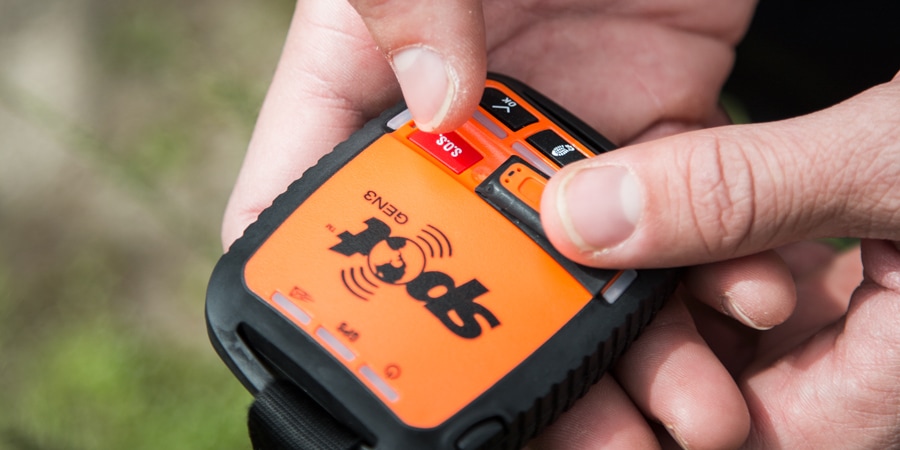
You don't need to bring an emergency fire suit or forgo synthetic (melt-able) clothing fabrics unless you plan to be a wildland firefighter. A few items, though, are worth considering:
- Satellite messenger or personal locator beacon (PLB): More reliable than a cellphone, which very often will not have service, these devices allow you to signal for help. (For tips on picking one, read How to Choose Between a PLB and a Satellite Messenger.) Many models allow you to send messages back and forth to someone at home, too, who can thoroughly investigate how serious a nearby fire has become.
- Signal mirror: Rescue pilots might have difficulty spotting you, which is why having a mirror and knowing how to signal with it is important. (Practice before you go.) Some mirrors have special sights for focusing the signal. Flash it 3 times—the universal symbol of distress. Also, in situations where you don't have a way to call for help electronically, you can use a signal mirror to try to catch the attention of any aircraft that are flying in to assess and fight the wildfire that threatens you.
- Medications and medication plan: Many asthmatics have a progression of inhalers and other medications—and a carefully crafted plan to use them as symptoms worsen. If you have asthma or another serious cardio-pulmonary condition, ask your doctor if you need a similar plan and make sure you carry the related prescription medications to follow that plan.
- Weather alert radio:The National Oceanic and Atmospheric Administration (NOAA) has a system for weather alerts that now extends to all hazards. So, a radio that offers NOAA alerts will also tell you when there is a wildfire emergency in your area.
- Thick-soled hiking boots: If you want to be extra prepared, mimic wildland firefighters by wearing boots with soles that can stand a little heat underfoot.
What to Do If You Encounter Wildfire Smoke
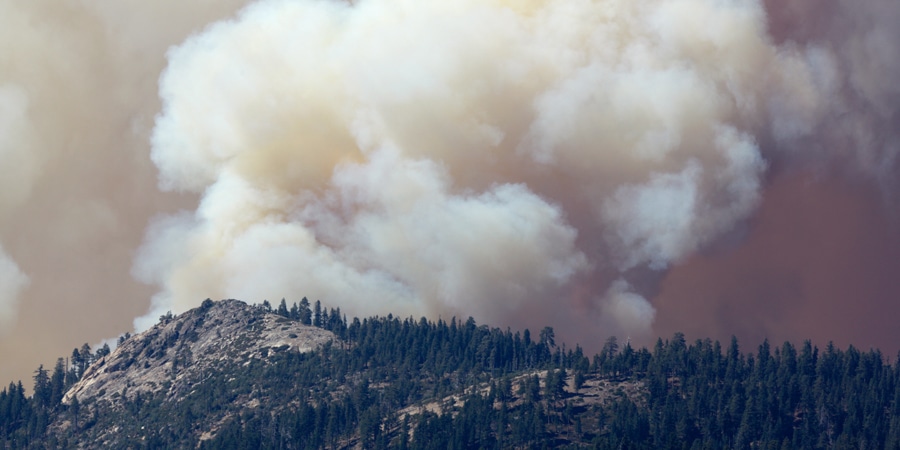
For many of us, the big dilemma comes when we encounter smoke after we've left the trailhead. It's important to understand that smoke and ash can come from far away (some weather patterns can carry particulates halfway around the globe), so no need to panic at the first sign of smoke or ash. However, prolonged smoke exposure is not good for your health, can sully iconic vistas and might even be a sign that a previously distant wildfire is approaching. Note that smoke settles into low areas at night, so it's not uncommon to wake up to a smokier landscape if you camp in a valley or a basin.
If you encounter smoky skies, you can assess the presence of damaging microparticles by the color; if the atmosphere has a yellowish orange to red hue, breathing will be unhealthy and it might be time to leave. If you decide that the smoke is temporary, you can rest when the smoke is thicker, then move out when it disperses.
If you see a column of smoke rather than just a general haze, you can make some educated guesses about the type and direction of fire that's causing it:
- White smoke usually indicates finer, fast-burning fuels (fast-moving fires such as grass fires generally burn for a short duration).
- Dark smoke indicates thick brush or timber. This means it could be a longer-lasting fire, and one that has the potential for "spotting." Embers can be carried aloft, sparking fires farther ahead. Embers can even be carried over fire breaks like rivers or highways.
- The larger the column, the larger the fire. If you see the smoke column growing bigger, get out of the area.
- The direction that a smoke column bends indicates the direction the fire is moving, so head the other way if possible.
If the atmosphere has a yellowish orange to red hue, breathing will be unhealthy and it might be time to leave.
What to Do If You Encounter Wildlife Flames
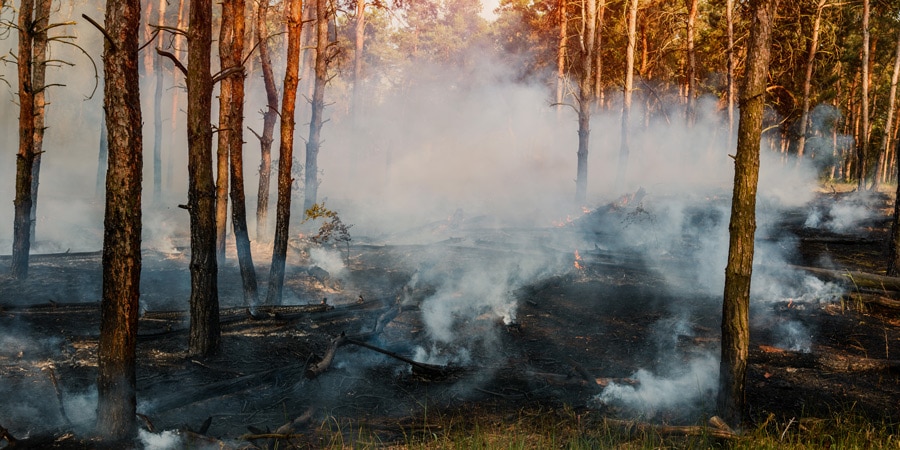
- If you see flames, retreat in the opposite direction. You don't need to outrun it (it travels as fast as the wind), but you do need to travel in a direction that takes you away from where it's headed.
- A rising smoke column that's nearby means it's time to go, especially if it's bending toward you.
- If you get smoked out suddenly, it's time to move out.
- If you are hiking in an area where the fire danger is high and start to see a lot of "dry lightning" (flashes of light, but no rain appears to be present), it might be time to head out.
- Fires go uphill faster than downhill, so don't try to escape over a ridge unless you're near the crest and can quickly drop over the other side.
- If the fire gets dangerously close, head for a large flat area with little vegetation (rocks, meadows, shallow lakes/creeks) because it will have little fuel to feed or attract the fire.
- If you can safely travel over already-blackened earth, that's also good strategy because the fire will likely be headed away from you, and there is little fuel to attract it back your way.
- If you are in a recently blackened area, watch for possible falling tree snags and be careful not to step in hot ash pockets (smoldering gray/white piles where heavy fuel burned). Too much ground heat can also melt the soles of your shoes (an argument in favor of wearing thick-sole boots—like wildland firefighters—rather than trail shoes).
If the fire gets dangerously close, head for a large flat area with little vegetation (rocks, meadows, shallow lakes/creeks) because it will have little fuel to feed or attract the fire.
How to Report a Wildfire
Report any and all fires you see by calling 911 right away, or as soon as you reach an area with cell service. Be prepared to provide specifics about your location (GPS coordinates, ideally) when you saw it. Even if the fire has already been reported, you might be able to provide additional information that's helpful to emergency responders, such as color and size of the smoke column, topographical landmarks, road or trails into the area and human activity observed in the area.
Keep Campfires from Becoming Wildfires
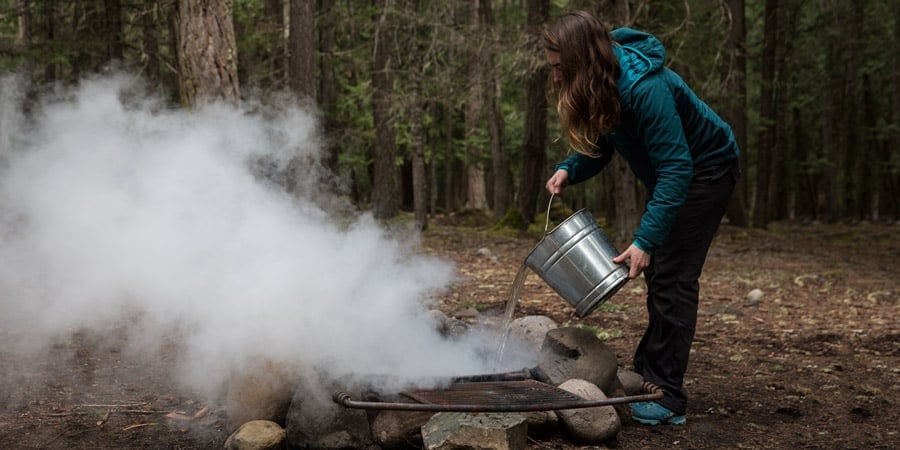
Before lighting a campfire, always check with a local land manager to be sure there are no fire restrictions or bans in the area. Then make sure you have an existing fire ring and one where no vegetation has encroached up to the edge (you want a few feet of clearance from all ground vegetation around the campfire).
Never leave your fire unattended—an ember could escape and cause a wildfire. When you're done with it, carefully douse the fire with water (stand where the steam won't burn you as you pour), stir the ashes and apply more water. Keep dousing, stirring and breaking apart embers until all remnants of the fire are cool to the touch. Make sure you are well-informed about setting campfires by reading our article How to Build a Campfire.

